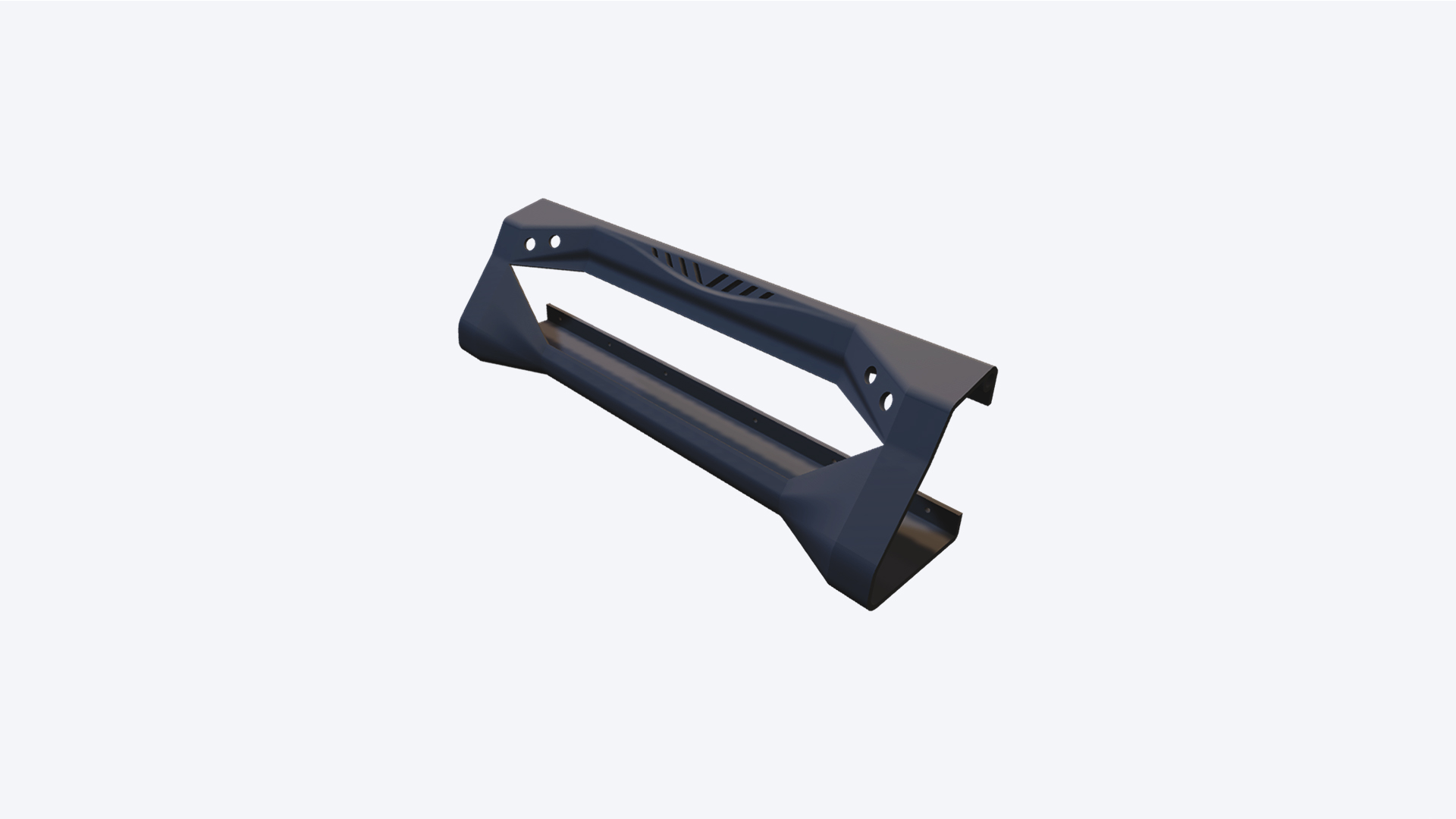
Super polymers and additive manufacturing of large format parts: how railway production is changing
The railway sector is undergoing an epochal transformation thanks to the adoption of super polymers and industrial additive manufacturing solutions for the creation of large-format parts. In this article, we will explore the context of this innovation, the benefits it brings and a specific case study, presented at Formnext 2023, on a customized panel inside the driving carriage of a train.
Railway Interiors: challenges and opportunities between standardization and customization
In the current context of railway interior manufacturing, the focus is on several aspects, including ergonomic design, safety, comfort and durable materials. The internal parts of railway carriages are often made of traditional materials such as wood, stainless steel, glass-reinforced plastic (GRP), and others, which are resistant to the spread of fire. These materials are selected to ensure strength, durability and ease of maintenance.
In traditional processes, interior production mainly uses the injection molding method for polymer parts and cutting and welding for metal parts. These methods, while well-established, can pose limitations in terms of design complexity and manufacturing time. In fact, the interiors of railway carriages often follow standardized designs to ensure uniformity and compliance with safety standards. This approach can limit the customization and adaptability of solutions to specific customer needs.
Furthermore, in recent years, there has been an increasing focus on the integration of comfort technologies, such as in-flight entertainment systems, power sockets and adjustable lighting. However, integrating these technologies often requires significant modifications to existing interiors.
The limitations described can be addressed with new approaches such as the use of super polymers, like PEKK and ULTEM 9085, and additive manufacturing unlocking new opportunities in the production of lighter, stronger and more customized interiors. These materials also offer certifications dedicated to the railway sector. Examples are PEKK, UL94 V0 certified, ULTEM 9085, EN45545 certified, or ToolingX CF, intrinsically self-extinguishing and classified V0 according to the UL94 standard. Furthermore, it is certified for the R22 (HL1) and R23 (HL1 – HL2 -HL3) railway sector according to EN 4554-2. The integration of these technologies can redefine the landscape of railway interior manufacturing, offering more advanced, efficient and sustainable solutions. Let's see how.
Benefits of industrial additive manufacturing of large format super polymer parts
Additive manufacturing of large-format super polymer parts emerges as a revolutionary prospect, offering a number of significant advantages that redefine design and manufacturing paradigms. Among the most relevant we mention:
1. Lightweight and strong: Super polymers offer a unique combination of lightness and strength, allowing the creation of lighter parts without compromising structural strength. Furthermore, the lightness of the material also contributes to a reduction in fuel consumption, making the entire system more energy efficient.
2. Customization: Additive manufacturing allows parts to be customized to specific needs. This flexibility is crucial to adapt solutions to various train configurations and particular customer needs.
3. Reduced Production Time: By using advanced 3D printing processes, production time can be significantly reduced compared to traditional methods. This allows for greater efficiency in the supply chain.
4. Environmental sustainability: Additive manufacturing reduces material waste, contributing to a more sustainable approach to industrial production.
The case of the customized railway panel made with ARGO 1000 HYPERMELT
Imagine replacing a critical panel in the driver's carriage of a train. Using industrial additive manufacturing and ULTEM 9085 material, among high-performance polymers with FST (flame, smoke, toxicity) certification, it is possible to design and fabricate a custom panel that meets the exact specifications required. Customization does not compromise strength and does not incur any additional cost. In addition, thanks to industrial 3D printing, the panel can be fabricated in record time, minimizing train downtime for maintenance.
Once the part has been obtained with the additive method, we proceed with post-processing techniques such as sandblasting and painting, to obtain the desired roughness and aesthetic-functional finish. The last step is the validation of the finished part, crucial to verify in detail that the component complies with all the required specifications. This may include visual inspections, strength tests, dimensional analyzes and, if necessary, tests for compliance with FST safety standards.
HYPERMELT's technological paradigm
The HYPERMELT technology equipped on the ARGO 1000 solution is a new paradigm in the field of additive manufacturing of high-performance polymers, based on the use of pellets as raw material. This innovative approach enables the production of large-format parts with a wide range of advanced materials, including super polymers such as PEKK and ULTEM 9085, composites such as PEEK and PA filled with carbon fiber, elastomers, recycled materials and bio-based polymers. HYPERMELT technology represents a breakthrough in the use of 3D printing in manufacturing.
Overcoming the limitations of traditional 3D printing volumes, HYPERMELT technology can produce parts with 10x faster production speed and up to 60% reduced costs compared to filament methods, while maintaining high deposition precision compared to Large format pellet 3D printing (LFAM) already on the market.
ARGO 1000 HYPERMELT is the result of the work of some of the best engineers and materials scientists in the world. They have worked for years to develop what we hope will become the tool used by the world's best innovators and inventors to change manufacturing. If you consider yourself one of them, contact us today, explore the potential of ARGO 1000 HYPERMELT and join us in shaping the future of manufacturing. Your creativity and vision can be the key to pushing the boundaries of industrial innovation.
